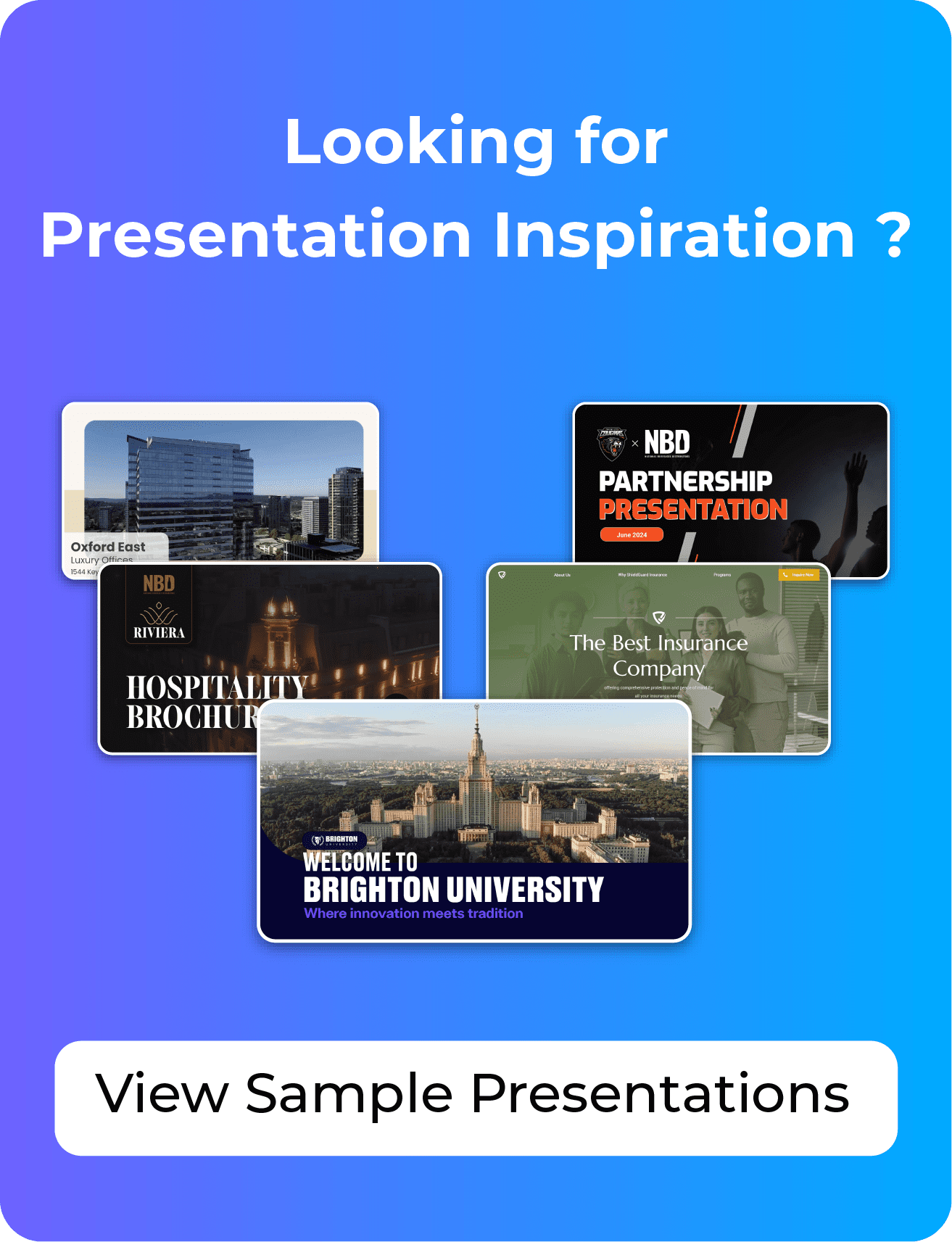You want your B2B presentation to be original and look professional.
We feel your pain:
In the era of AI, when many specialists trust corresponding tools and services with their work, most content seems homogeneous and sometimes sounds robotic. Distinguishing AI-written content from human work becomes a challenge.
That’s where an AI checker comes into play.
In this article, we discuss the role of AI checkers in today’s content creation and explain how these tools can help you polish presentations for better quality and innovation.
What Is an AI Checker?
AI checkers, aka AI detectors, are tools designed to recognize AI-generated content and mark it as one crafted by a robot, not a human specialist.
Like AI writing tools, checkers are based on language models. That’s how they work, in plain English:
A language model looks at a content asset (text) you give it and asks, “Is it anything I could write?” If the answer is positive, it marks that content as AI-generated. Specifically, it looks at two indicators in a text:
- Perplexity (how unpredictable a text is)
- Burstiness (how varied its sentence length and structure are)
The lower these two indicators, the more likely the text is AI-generated.
Human writing tends to have more creative language choices (higher perplexity) and more diverse sentence structure for better engagement and readability (higher burstiness).
Why Use Them for Content Creation
Businesses and institutions that praise original content with insights from experts use AI detectors to check texts they get from you:
They want to protect themselves from inaccurate information, spam content, or superficial writing that lacks creative flair and sounds amateurish, lacking human insights, perspectives, or emotions.
They won’t use or publish your AI-generated presentations because they know Google considers AI content duplication and spam and can ban their websites from search results for that.
Who are the potential users of AI checkers?
- Educators and academic institutions: They check if students’ and scholars’ submitted works are original.
- Legal recruiters: They check if candidates’ resumes and cover letters are their writing.
- Web content moderators: They fight automated misinformation and use AI checkers to identify spam and fake news.
AI checkers are actually for anyone willing to ensure they read or publish human-created content. Your potential clients, stakeholders, or investors can also use this tool to see if your presentation is original and made by you, not AI.
AI Checkers vs. Plagiarism Detectors
| Plagiarism checkers: | AI checkers: |
| Showcase if a given text or its excerpts are copied from other resources These tools compare the content asset to a previously published work database and detect direct similarities. | Showcase if AI writing tools generate a given text They do that by measuring specific text characteristics, not comparing it to other published works from databases. |
However:
Some advanced plagiarism check tools, including AI checkers, also flag AI-generated texts as plagiarism. Why? It happens because AI writers build sentences and paragraphs on the information they take online but don’t cite. By generating original sentences, AI writing tools may copy some directly from existing texts or those very similar. Implementing the best AI tools for research can significantly reduce this risk by enhancing content originality and improving citation practices.
Also, given that more and more AI-generated texts appear online, plagiarism checkers detect them simply because other similarly-worded content assets already exist in databases. (No wonder, as all AI texts have the same language patterns and sentence structures.)
How to Use AI Checkers When Crafting Your Presentation
What does it all have to do with B2B presentations, and how can AI checkers help you craft yours?
Below are the five ways you can use an AI checker to improve and polish your presentation:
1 — Prevent Misuse of AI
AI content isn’t a monster to avoid, ban, and kill once it appears somewhere online. It can be a helpful hand and a great productivity tool for creators. It’s okay to use AI for research. You can also try AI writers to help with the presentation title or outline. Product descriptions, Wikipedia-like definitions, social media posts — delegating standard and monotonous tasks to AI is okay.
The problem is that some creators rely on AI tools too much. They make AI do all the job.
As a result, the quality suffers. To prevent that, use an AI checker when writing content for your presentation slides. It will discourage you from over-relying on AI, fostering a culture of originality and intellectual effort.
2 — Ensure Content Authenticity
Scan your presentation via AI checkers before submitting it for review, publishing it on your platforms, or representing it to the target audience.
An AI detector will identify slides and sections that look AI-generated (low-quality writing that sounds robotic) so you can revise them with more original thoughts and insights.
3 — Correct Grammar and Punctuation
AI checkers are about more than just detecting your content for AI patterns.
They are also great proofreaders and editors:
Give them your presentation draft, and they’ll review it, highlighting problematic areas and providing suggestions for improvement. Typos, grammar mistakes, repetitions, wrong punctuation, poor word choice, passive voice misuse, and other drawbacks — you’ll see them and decide whether to revise your document accordingly.
AI scans content within minutes, so such assistance will save you time and allow you to notice tiny errors you might miss when designing your presentation slides.
4 — Improve Readability and Engagement
AI checkers can also recommend structural enhancements for your presentation.
They’ll analyze words, sentence structures, tone of voice, and content coherence, revising weak areas to improve your target audience’s engagement. A tool will offer a readability score to determine how easy it will be for others to perceive your content and understand your message.
5 — Detect Plagiarism
Use AI checkers to scan your presentation for duplications to approve its originality and verify your authorship. By indicating similarities with other content, a checker suggests that you’ll revise problematic areas, thus avoiding accusations of plagiarism from the audience.
In a Word
Now that you know the role of AI checkers in crafting professional and plagiarism-free B2B presentations, why not choose one and add it to your toolkit?
If you are still wondering how to structure a presentation so it looks innovative, engages the target audience, and conveys your brand message, CustomShow is an attractive option. It keeps your brand voice and helps you stand out so no one doubts the expertise and human perspective you communicate to the audience.






